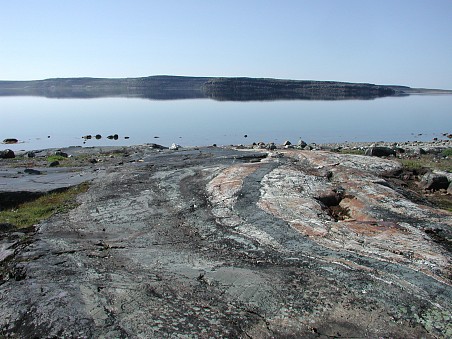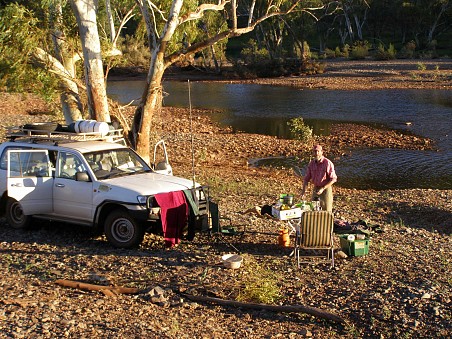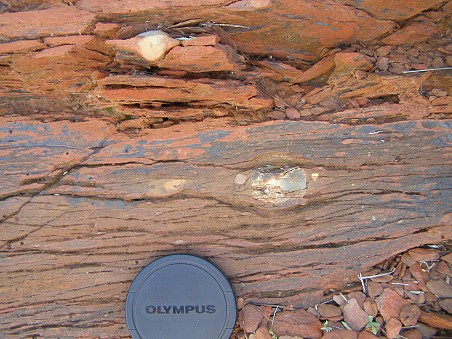2008 Annual Science Report
 University of Colorado, Boulder
Reporting | JUL 2007 – JUN 2008
University of Colorado, Boulder
Reporting | JUL 2007 – JUN 2008
Sulfur Biogeochemistry of the Early Earth
Project Summary
Sulfur is widespread in surface geochemical systems and is abundant in many rock types. It is present in volcanic gases and marine waters, and has served a key role in geobiological processes since the origin of life. Like other low atomic number elements, sulfur isotope ratios in various compounds usually follow predictable mass-dependent fractionation laws; these different mass-dependent isotope fractionations serve as powerful tracers for igneous, metamorphic, sedimentary, hydrothermal and biological processes. Mass-independent sulfur isotope fractionation is a short-wavelength photolytic effect that occurs in space, as well as in gas-phase reactions in atmospheres transparent to deep penetration by ultraviolet light. Crucial aspects of the chemical evolution of the early atmosphere — and the surface zone as a whole — can be followed by mass-independent sulfur isotopes in Archean metasedimentary rocks. Metabolic styles of organisms in response to global changes in surface redox over geologic time can also be traced with multiple S isotopes.
We have concluded from our various studies over the last year and before to the very inception of the NAI node at Colorado, that all Archean sulfur minerals previously documented for their 34S/32S compositions warrant a comprehensive re-examination of their 32S, 33S, 34S (and 36S), sulfur isotope systematics.
Project Progress
1. We discovered the exact stratigraphic location of the demise of the mass-independent sulfur isotope anomaly associated with the inexorable rise of atmospheric oxygen in the sediments of the ca. 2.45 Ga lower Huronian Pecors Fm. in southern Ontario. This work was partially funded also by a graduate astrobiology grant to our former student D. Papineau and was published in 2007 in Earth and Planetary Science Letters. A follow-up project with M. Van Kranendonk of the Geological Survey of Western Australia (and supported by an NAI International collaboration grant) revealed the best candidate outcrop for the Archean-Proterozoic boundary, and the rise of atmospheric oxygen, in the world within the Turee Creek Group, Hamersley Basin, Western Australia. Data are already forthcoming from that study.
2. We completed the first ever survey of multiple sulfur isotopes for the oldest rocks in southern West Greenland, and for a new group of old rocks found in northern Quebec (both units are more than 3.78 billion years old). Data were reported in publications in the journals Geobiology and Earth and Planetary Science Letters.
3. We were the first to co-analyze Fe isotopes with multiple S isotopes in the same rocks, the pre-3.78 Ga Nuvvuagittuq Supracrustal Belt in northern Quebec. Data were reported in Earth and Planetary Science Letters.
4. A comprehensive review of the geochemistry of sulfur in the oldest rocks was prepared for the book “Earth’s oldest rocks” that was published late 2007 by Elsevier.




-
PROJECT INVESTIGATORS:
-
PROJECT MEMBERS:
Dominic Papineau
Collaborator
Axel Schmitt
Collaborator
Martin Van Kranendonk
Collaborator
Nicole Cates
Doctoral Student
Elizabeth Swanner
Doctoral Student
-
RELATED OBJECTIVES:
Objective 1.1
Models of formation and evolution of habitable planets
Objective 1.2
Indirect and direct astronomical observations of extrasolar habitable planets
Objective 4.1
Earth's early biosphere
Objective 4.2
Foundations of complex life
Objective 5.1
Environment-dependent, molecular evolution in microorganisms
Objective 5.2
Co-evolution of microbial communities
Objective 5.3
Biochemical adaptation to extreme environments
Objective 6.1
Environmental changes and the cycling of elements by the biota, communities, and ecosystems
Objective 7.1
Biosignatures to be sought in Solar System materials
Objective 7.2
Biosignatures to be sought in nearby planetary systems

